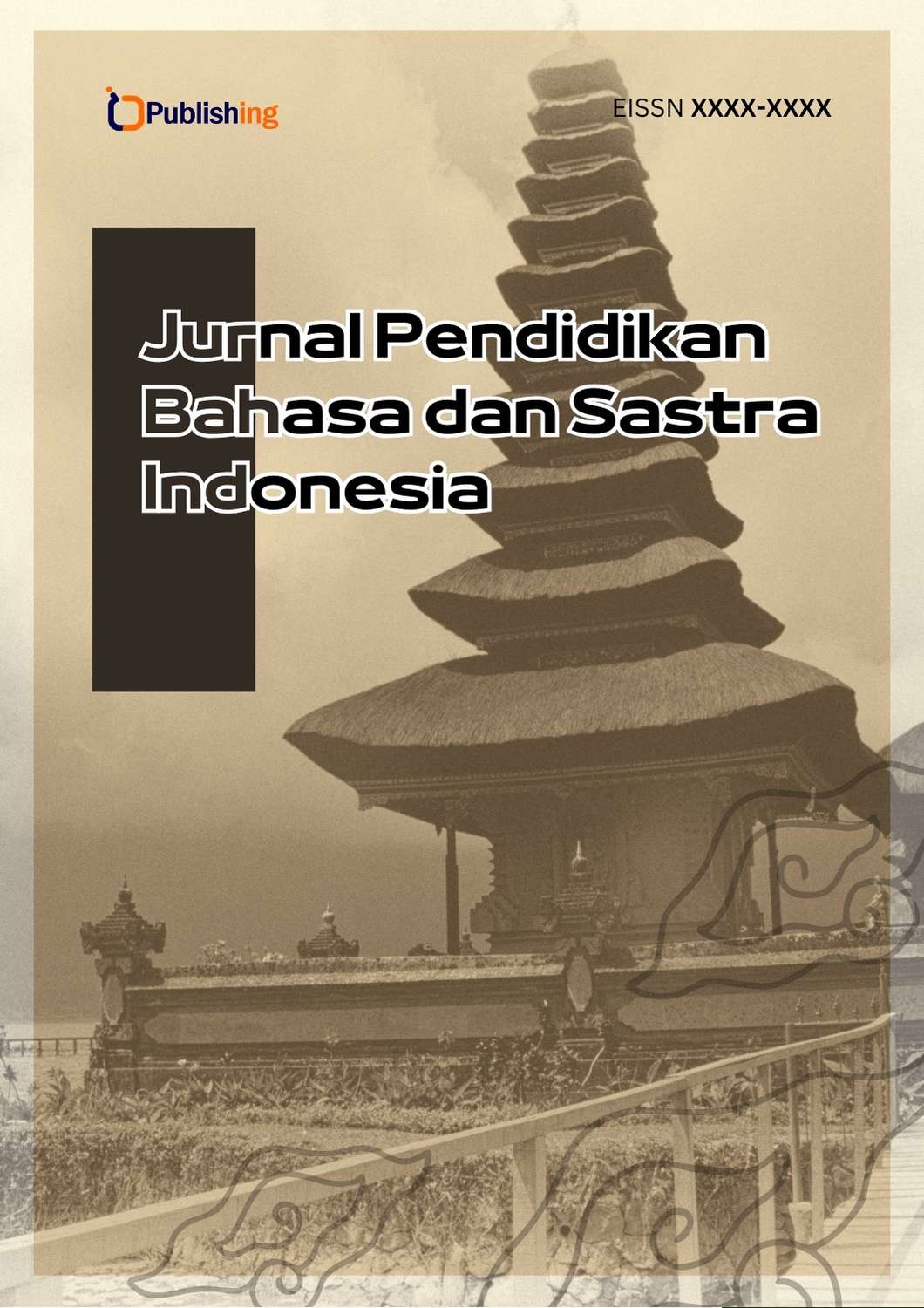Ideal Student Prototype: A Cognitive Linguistic Study
DOI:
https://doi.org/10.47134/jpbsi.v1i3.1587Keywords:
Ideal Student, Prototype, Cognitive LinguisticsAbstract
This research aims to describe the ideal student prototype within the Ideal Cognitive Model (ICM), which can represent the conceptual knowledge of an ideal speaker without excluding other concepts. The study is based on cognitive linguistic analysis, examining how the human mind shapes speech. The term “Ideal Student” does not yet have a definition that accurately captures its meaning due to the many individual perceptions and diverse categories people use to define it. As a result, the concept has developed into various prototypes. In this study, the researcher provided commonly spoken concepts, and respondents selected those that matched their own cognition of the term “ideal student.” The collected data were then classified and analyzed to identify the ideal meaning within their cognition, using Lakoff's prototype theory. The results are presented in the form of tables and model explanations. The analysis concludes that the top three models within the ideal student prototype are having many soft skills, being diligent, and being active in organizations.
References
Almanna, A. (2023). Linguistics for Translators. Linguistics for Translators, 1–274. https://doi.org/10.4324/9781003228028
Azizah, N. (2022). Ruang Mental Dan Model Kognitif Ideal Pejabat Pemerintah Pada Humor Satire #Lordluhut. PRASASTI: Journal of Linguistics, 7(2), 212. https://doi.org/10.20961/prasasti.v7i2.65643
Carnie, A. (2023). Constituent structure. Constituent Structure, 1–292. https://doi.org/10.1093/oso/9780199261994.001.0001
Coecke, B. (2017). Picturing quantum processes: A first course in quantum theory and diagrammatic reasoning. Picturing Quantum Processes, 1–844. https://doi.org/10.1017/9781316219317
Gismin, S. S., & Mansyur, A. Y. (2018). Salat Subuh dan Dimensi Ideal Mahasiswa. Psikis: Jurnal Psikologi Islam, 4(2), 82–90.
Islami, J. R., & Arimi, S. (2022). Kategorisasi atas Kata Bread, Pastry, Cake, Biscuit, dan Cookie dalam Pikiran Orang Jawa. Suar Betang, 17(1), 123–137. https://doi.org/10.26499/surbet.v17i1.328
Jannah, F., & Sulianti, A. (2021). Perspektif Mahasiswa sebagai Agen Of Change melalui Pendidikan Kewarganegaraan. ASANKA: Journal of Social Science And Education, 2(2), 181–193. https://doi.org/10.21154/asanka.v2i2.3193
Kingsley, I. (2019). Hidden in the Figures: What Students Are Telling Us about the Effectiveness of Astrobiology Outreach. Astrobiology, 19(9), 1103–1116. https://doi.org/10.1089/ast.2019.2048
Kornai, A. (2019). Semantics. Semantics, 1–298. https://doi.org/10.1007/978-3-319-65645-8
Kurniawati, J. (2016). Literasi Media Digital Mahasiswa Universitas Muhammadiyah Bengkulu. Komunikator, 8(2). https://journal.umy.ac.id/index.php/jkm/article/view/2069
Lugea, J. (2023). Stylistics: Text, Cognition and Corpora. Stylistics: Text, Cognition and Corpora, 1–296. https://doi.org/10.1007/978-3-031-10422-0
Nasution, U., & Casmini, C. (2020). Integrasi Pemikiran Imam Al-Ghazali & Ivan Pavlov Dalam Membentuk Prilaku Peserta Didik. INSANIA: Jurnal Pemikiran Alternatif Kependidikan, 25(1), 103–113. https://doi.org/10.24090/insania.v25i1.3651
Nugraha, G. (2016). Hubungan Kecerdasan Emosional Dengan Prestasi Akademik Mahasiswa Atlet UKM Sepakbola UPI. Jurnal Kepelatihan Olahraga, 9(1), 12–19.
Rifki, M., Sauri, S., Abdussalam, A., Supriadi, U., & Parid, M. (2023). Internalisasi Nilai-Nilai Karakter melalui Metode Keteladanan Guru di Sekolah. Jurnal Basicedu, 7(1), 89–98. https://doi.org/10.31004/basicedu.v7i1.4274
Rooij, I. van (2019). Cognition and intractability: A guide to classical and parameterized complexity analysis. Cognition and Intractability, 1–354. https://doi.org/10.1017/9781107358331
Rosyid, R. M. F., & Baroroh, U. (2020). Teori Belajar Kognitif Dan Implikasinya Dalam Pembelajaran Bahasa Arab. لسـانـنـا (LISANUNA): Jurnal Ilmu Bahasa Arab Dan Pembelajarannya, 9(1), 92. https://doi.org/10.22373/ls.v9i1.6735
Sari, D. M., & Baskoro, B. R. S. (2020). Prototipe Keperawanan Dalam Perspektif Pengguna Twitter: Kajian Linguistik Kognitif. Deskripsi Bahasa, 3(1), 57–66. https://doi.org/10.22146/db.v3i1.401
Sina, I. (2024). Metodologi Penelitian Kualitatif Dan Kuantitatif Untuk Ilmu Sains. 63. https://repository.penerbitwidina.com/publications/567675/metodologi-penelitian-kualitatif-dan-kuantitatif-untuk-ilmu-sains
Tamera, D., Monica, G., Siburian, J., Berutu, K. N., & Samaloisa, R. (2023). Pastoral Konseling Dalam Mengatasi Malas Belajar Terhadap Mahasiswa. MAWAR SARON: Jurnal Pendidikan Kristen Dan Gereja, 6(2), 156–176. https://doi.org/10.62240/msj.v6i2.62
Tasliati, T. (2020). Semantik Prototipe Kata Mencuri Dalam Bahasa Indonesia: Analisis Linguistik Kognitif. GENTA BAHTERA: Jurnal Ilmiah Kebahasaan Dan Kesastraan, 6(2), 122–134. https://doi.org/10.47269/gb.v6i2.109
Weigand, E. (2017). The Routledge handbook of language and dialogue. The Routledge Handbook of Language and Dialogue, 1–374. https://doi.org/10.4324/9781315750583
Winter, B. (2019). Statistics for Linguists: An Introduction Using R. Statistics for Linguists: An Introduction Using R, 1–310. https://doi.org/10.4324/9781315165547
Wu, J. (2024). Negotiating Mongolian ethnic identity through the teaching of Mandarin Chinese as a second language. Journal of Multilingual and Multicultural Development, 45(9), 3980–3994. https://doi.org/10.1080/01434632.2022.2134879
Zakiyah, M., Fiaji, N. A., & Zulvarina, P. (2018). Semantik Prototipe Korupsi: Kajian Linguistik Kognitif. RETORIKA: Jurnal Bahasa, Sastra, Dan Pengajarannya, 11(2), 164. https://doi.org/10.26858/retorika.v11i2.5137
Downloads
Published
How to Cite
Issue
Section
License
Copyright (c) 2025 Muhamad Husain Rifai, Aad Nur Sayyidus Syuhuur Baking, Ummi Hasanah, Alif Zakaria, Betty Ayunda Wulandari

This work is licensed under a Creative Commons Attribution 4.0 International License.





